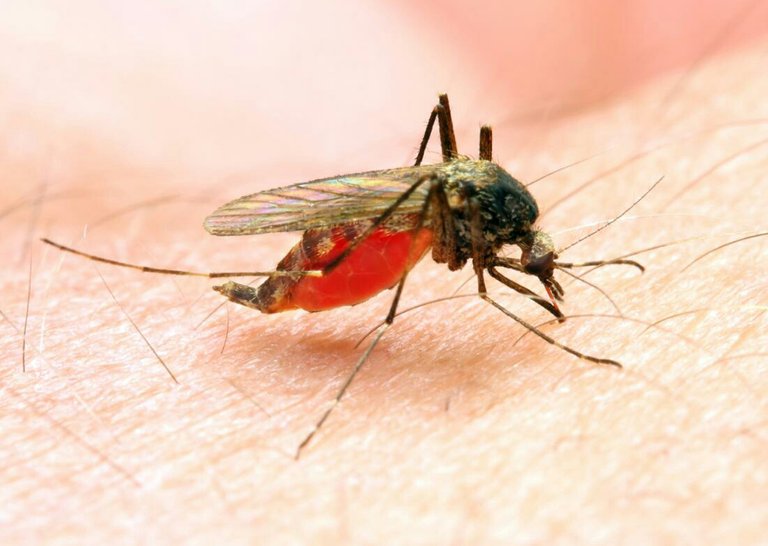INTRODUCTION
Malaria is a protozoan infection, transmitted through the bite of an infected female anopheles mosquito. It is endemic in 91 countries of the world. Till date, it remains a major cause of mortality and morbidity in children living in Sub-Saharan Africa.
MYTHS AND MISCONCEPTIONS
Contrary to widely-held opinions in some quarters, malaria is not caused by consumption of certain diet such as fatty foods and processed foods. Till date, there is no scientific proof backing such assertions. Malaria is only transmitted via mosquito bite, infected female anopheles mosquito.
CAUSATIVE ORGANISM AND VECTORS
What causes malaria is a protozoan called plasmodium. Common species of plasmodium that cause the disease in human include: Plasmodium falciparum, Plasmadium vivax, Plasmodium ovale and Plasmodium malariae. Recently, a dangerous specie known as Plasmodium knowlesi was discovered in south-east Asia. In all parts of Africa, Plasmodium falciparum is the commonest specie and accounts for up to 90% of all malaria cases in countries like Nigeria.
The vector of plasmodium parasite is female anopheles mosquito and over 400 species of this mosquito has been discovered. They include but not only: A. gambiae, A. moucheti and A. melas.
EPIDEMIOLOGY
Malaria thrives on tropical and subtropical regions of the world located around the equator. These include Sub-Saharan Africa, Latin America and Asia. As at 2016, there were 216 million reported cases of malaria worldwide with an estimated 731,000 deaths. 90% of these cases and deaths occurred in Africa. A rough estimate of economic burden malaria impose on Africa pitch the cost at US$12 billion annually. It is that serious!
PATHOPHYSIOLOGY
When an infected female anopheles mosquito bites someone, it releases sporozoites contained in its saliva into the person's bloodstream. These sporozoites migrate to the liver where they invade the hepatocytes(liver cells). Here, they undergo rapid asexual multiplication giving rise to schizonts. These schizonts burst from their host cells releasing millions of merozoites. The merozoites now invade erythrocytes (red blood cells). They continue their asexual multiplication in the red blood cells causing their destruction and invading new erythrocytes. The fever one experiences while suffering from malaria coincides with the period the merozoites are released from infected erythrocytes. Because of the destruction of erythrocytes by the merozoites, the level of red blood cells in the plasma reduces thereby resulting in anaemia which is the commonest complication of malaria parasite.
SIGNS AND SYMPTOMS
The signs and symptoms are dependent on whether the malaria is uncomplicated or severe. The most common signs are fever, headache, chills and rigors, general weakness of the body, loss of appetite, profuse sweating, myalgia and arthralgia, etc. Systemic manifestation like hepatosplenomegaly (enlargement of the liver and spleen), anaemia, dry cough and others may occur depending on the system affected. This is usually in severe cases.
It is important to differentiate enteric fever(typhoid fever) caused by salmonella species from fever caused by malaria. While the former seems to be continuous with spikes, the latter usually occurs in evening with associated rigors and chills. This will help to differentiate between the two. In young children, malaria may equally cause abdominal pain, poor feeding and even diarrhoea.
ENDEMICITY AND SUSCEPTIBILITY
Endemicity refers to constant presence of a disease in a given region or country. People living in malaria endemic area develop immunity which offer them resistance to malaria attack in adulthood. A typical example is people living in west Africa. In these places, there are regular malaria attacks and once they were able to survive the attack as children, it will be difficult for malaria to kill them as adults. The level of endemicity varies from one place to another; so also is the immunity that can be conferred on the people living in these places against malaria. Places where there are no malaria infection are known as malaria free areas. People living here has no immunity whatsoever against malaria and they are vulnerable to severe malaria once they are exposed to the parasite.
Susceptibility to malaria parasite varies. In malaria endemic areas, the most susceptible people are children under 5 years but above 6 months. Children below 6 months are usually free from malaria because they acquire immunity from their mothers through the placenta. Also, they have a high concentration of a type of haemoglobin known as foetal haemoglobin which does not allow Plasmodium to thrive. Para-amino benzoic acid (PABA) in breast milk offers them some sort of protection too. Pregnant women have high susceptibility to malaria too. Malaria can lead to abortion, still birth, low birth weight babies and even death of the pregnant woman. Visitors from malaria free areas to endemic areas are also highly susceptible to malaria. People with sickle cell anaemia, those with HIV/AIDS or/and other immunocompromised people are susceptible too.
TYPES OF MALARIA
Malaria can be uncomplicated or severe.
Uncomplicated malaria is malaria with obvious symptoms but without any organ dysfunction.
Severe malaria is asexual parasitaemia (presence of parasite in blood) with clinical or laboratory evidence of organ dysfunction which is not caused by any other identifiable disease. Organ dysfunction can manifest as jaundice, renal impairment, pulmonary oedema, etc. The Plasmodium species that have been shown to cause severe malaria are falciparum, vivax and knowlesi.
DIAGNOSIS OF MALARIA
Malaria can be diagnosed clinically or parasitologically. Clinical diagnosis is based on the signs and symptoms observed by a skilled doctor or physician. This has a low specificity and should be discouraged unless the case is serious with high suspicion or there is no facilities for parasitological diagnosis. Parasitological diagnosis can be done in two ways. The first is by using microscope. Microscope will show the presence of the parasite in a blood sample thereby confirming the diagnosis. It is the gold standard for diagnosing malaria. The second parasitological method is by the use of rapid diagnostic test kit(RDT). Here a sample of blood will be put into a test kit that's already available, certain changes will indicate whether the patient has malaria or not. This however has lower specificity compared with microscopy. It should be used where microscopy is not available. The only advantage is that it does not require much expertise.
PROPHYLAXIS AND PREVENTION
Prophylactic treatment of malaria is important in pregnant women to ensure they do not come down with malaria. They are given drugs during ante-natal visits. They are given calculated doses of sulphadoxine-pyrimethamine combination. The dosage varies from one region to another depending on the prevalence and seriousness of the disease in such area. Individuals who are visiting malaria endemic areas or those living in areas of low endemicity can equally take antimalarials for prophylaxis.
Malaria is prevented worldwide by sleeping under insecticide-treated mosquito nets, use of insecticides such as DEET, ensuring bushes are not around households and avoiding stagnant water near homes.
TREATMENT
Drugs used for the treatment of malaria are known as antimalarials. It is important to know that chloroquine is no longer considered to be in either first or second line drug for malaria treatment. The current trend in malaria treatment is combination of two different drugs known as antimalarial combination therapy(ACT). They include: Artesunate-amodiaquine, artemether-lumefantrine and to a lesser extent sulphadoxine-pyrimethamine. The most popular one is artemether-lumefantrine combination. Drugs like coartem, lonart, lumartem, artemef, etc. contain it. They should be taken with fatty foods like butter, milk, cheese, oil, etc. to enhance efficacy. Complete dosage lasts for 3 days. The dosage also should be dependent on body weight of the patient. They are enough to treat uncomplicated malaria.
.jpg)
Dosage of Artemether-lumefantrine
Source
Severe malaria is not treated with ACTs alone. They are treated with injections - intravascular or intramuscular. The first drug to use is artesunate; if artesunate is not available, quinine can be used. Dosage is also dependent on age or body weight of patient. After the injections, patient can be placed on ACTs.
PROGNOSIS
With proper treatment, malaria can be effectively managed. However, if not well handled or neglected it can be fatal in young children and pregnant women. Also, it can be dangerous in people visiting malaria endemic areas e.g an American visiting a west African country. If you know of any such person, please rush the person to a good hospital once the person has fever.
RELAPSE AND RECRUDESCENCE
Recrudescence occurs when the parasite was not totally cleared from the system. This occurs following lack of adherence to treatment or inability to complete drug dosage. The patient will be relieved of the symptoms temporarily only to come down with it later with or without being bitten by another mosquito. This underscores the importance of adherence to treatment. Also, certain species of the parasite can be resistant to drugs. A typical example is P. knowlesi that is almost resistant to conventional antimalarials. Many Plasmodium species have been shown to be resistant to chloroquine.
Relapse is due to P. vivax and P. ovale species. It differs from a new infection or re-infection. They can hide in tissues for years only to come out again for further asexual multiplication.
CONCLUSION
Malaria is a global terror. It is actually more serious than people see it. Using Nigeria as a case study; over 90% of the population are at risk of suffering from malaria. 50% of the population have at least an attack per year. About 300,000 children die of malaria each year. About 11% of Nigeria's pregnant women die of malaria each year. 6 out of 10 Nigerians that go to hospital do do so because of malaria. The nation spends billions of naira annually combating the disease.
World Health Organisation (WHO) plans to reduce mortality cases of malaria by 40%, eliminate it totally in at least 10 countries and prevent its resurgence in countries where it has been eliminated. This is the Malaria Global Technical Strategy to be achieved in 2020.
We all have our parts to play in the fight against malaria. You can start by educating the masses.
REFERENCES
Okafor, H. U(2018). Malaria in Children.Paediatrics lecture note. UNTH, Enugu, Nigeria.
Thanks for stopping by.
I am @winningman

.jpg)
.jpg)

You have a minor misspelling in the following sentence:
It should be occurred instead of occured.Nice write up...thanks for enlightening us more on this....i appreciate your effort too...keep the fire burning
Thanks bro
Nice post... Thanks for the enlightenment
Hope to see more posts from you.
Thanks bro. I appreciate your kind words.